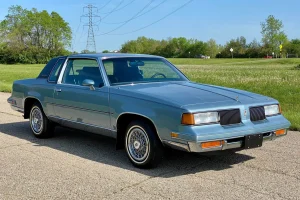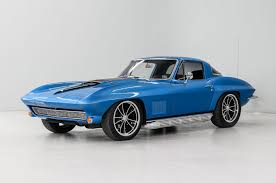Corvette vs Oldsmobile
Think back to your Junior Prom—what car did you arrive in?
For some, that might be a more recent memory, but if you’re over 40, it’s likely to prompt some thought. If the car is still around, it would be at least over 20 years old by now, maybe even closer to 40.
Has it become one of those cherished classics, or has it quietly disappeared, forgotten by time?
I thought I remembered the car I took to my Junior Prom—a Cutlass Supreme, or so I believed. But when I started looking at photos of those cars, I realized I was mistaken. So I did what anyone would do: I started googling cars from the mid-80s, trying to jog my memory. But no matter how hard I looked, I couldn’t find the exact car. And that’s when it hit me—that’s the point.
I can recall the prom itself: the dress, the meal, the date, even the color of the car. But the make and model? That detail has faded. For the sake of this devotion, let’s say it was an Oldsmobile 88—I’m about 90% sure that’s what it was.
But my Senior Prom? Now that’s a different story. The memory of that car—a ’67 Corvette—is as vivid as ever. The bucket seats, the roar of the engine (much to my father’s dismay), the killer stereo system, and the way people took notice when it drove by.
In the countless hours I spend on Hwy 150 here in Mooresville, NC, I see LOTS of Corvettes. New ones, not so new ones, classic ones.
I do not, however, see any Oldsmobiles. I’m sure there are a few relics out there, but I haven’t seen any.
And guess what?
They do not make them anymore.
The Oldsmobile Cutlass was one of the best-selling cars in America during the 1970s and 1980s. But over time, Oldsmobile struggled to redefine its identity in a market that was increasingly favoring imports and newer, more modern designs. Despite efforts to modernize, the Cutlass, and Oldsmobile as a whole, couldn’t keep pace. GM discontinued the Oldsmobile brand in 2004, marking the end of the Cutlass and other models.
For many in our world, God is like the Oldsmobile.
They are exposed by others to a God that:
*Doesn’t allow women to be in leadership (yes, that still exists for many).
*Created the world in a literal six days and if you deny that, you deny the omnipotence of God.
*Is like a strange notion, not able to address their issues of complexity and suffering in their experiences.
*Has a predicted timeline for this earth and we are all in “the final countdown.”
For many, believing in “that God” feels like stepping backward, to an earlier, less informed and enlightened time. And a time that frankly, as a world, we’ve left behind.
Helmut Thielicke is a German theologian, known for a quote that reflects the delicate balance required in theological exploration:
“The Gospel must be preached afresh and told in new ways to every generation, since every generation has its own unique questions. Only then can it answer the questions of the generation; but this cannot be done without sometimes almost falling into heresy and wounding orthodoxy.”
This quote highlights the challenge of communicating the Gospel in ways that resonate with contemporary audiences, even if it means risking controversy or pushing the boundaries of traditional orthodoxy. Thielicke underscores the importance of engaging with the unique questions and concerns of each generation, acknowledging that doing so can sometimes bring one close to theological tension or misunderstanding.
Perhaps it’s time to ask yourself: What would it look like to reimagine God not as a relic of the past, but as a living, breathing presence in your life today?
How might this reimagined God speak to the issues you face now, the questions you wrestle with, the hopes and dreams you carry?
After all, the God we talk about when we talk about God is not stagnate. God is one that can keep pace with the life we’re living now—challenging us, comforting us, and, most importantly, inviting us into a future filled with endless possibilities.


